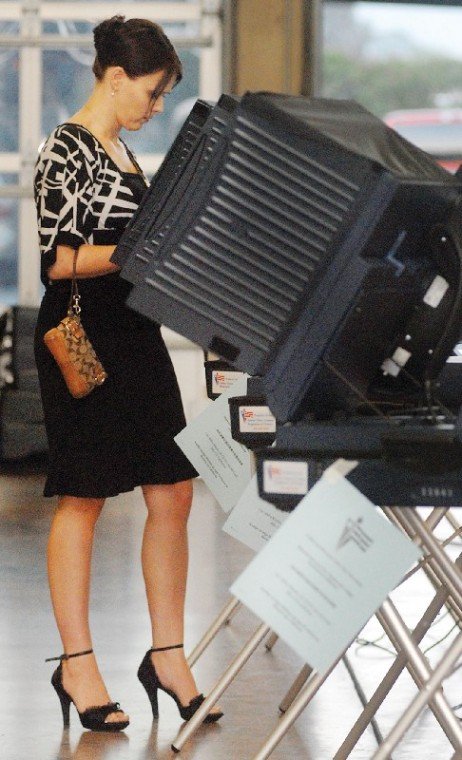A revised utility tax that gives taxpayers a 0.5 percent break
on traditional television and telephone services but levies a new
tax on a multitude of additional telecommunications won resounding
voter approval at the polls.
Sara Suddes – staff writer
A revised utility tax that gives taxpayers a 0.5 percent break on traditional television and telephone services but levies a new tax on a multitude of additional telecommunications won resounding voter approval at the polls. With all precincts reporting, 64 percent of voters favored Measure A, the only ordinance on Gilroy’s ballot this year – 3,103 “yes” votes to 1,735 “no” votes.
Gilroy residents will get an immediate half a percent break on taxes they pay on television and telephone services since 1971, but users of downloaded cell phone content, satellite television, and broadband long-distance calling will begin paying tax on their telecommunications.
Measure A gave voters the option to update the ordinance and consolidate the tax for all forms of telecommunications at a lower rate of 4.5 percent. Standard Internet usage will remain tax-exempt on all levels for the next seven years after the U.S. Senate passed passed legislation on Nov. 1 to extend the federal Internet tax moratorium.
Measure A replaced the previous tax many supporters said was outdated with a modern “communications users tax” that blankets all telecommunications with one consistent tax. The tax will level the playing field and enforce equality among all users and providers of telecommunications, Measure A backers said.
Proponents believe the measure will align the language and practice of the ordinance with emerging technologies.
“All the measures are confusing but I’ll go for anything that reduces taxes,” said voter Joe Arellano as he exited the Chestnut Street Fire Station polling place after voting in favor of Measure A. “If people don’t read up on the issues, it’s confusing.”
Opponents said the measure is designed to deceive voters.
“The government never voluntarily lowers taxes so red flags immediately went up when I saw this measure,” said Mark Zappa, conservative community activist and opponent of Measure A. “The average person, who may not be politically sophisticated, will not notice that they will pay more money in the future.” Zappa said that the electorate is being tricked by the wording of Measure A.
“The title and brief description of the measure imply a tax reduction,” said Councilman Craig Gartman, who represented the lone vote against putting the measure on the ballot. “It’s a poorly written measure that’s actually imposing a new tax on new technologies that have yet to be determined.” If the measure passes, “new taxable telecommunications will be determined by the city council without having to go back through the voters,” Gartman said.
Voter Carmen Hanson, voting at Gilroy High School in the evening, said that she told everyone she knew to vote no on Measure A. The 0.5 percent decrease “is deceptive and opens the door to unlimited taxation,” she said.
Mayor Al Pinheiro defended fairness as a major selling point of the new measure. In his argument for Measure A on the ballot statement, Pinheiro blamed the outdated language of the previous ordinance for the inconsistent taxation of Gilroy’s residents. He also wrote that the new tax will apply invariably to all users of telecommunications. Additionally, the approval of Measure A will eliminate the risk of losing a vital revenue source that contributes toward police and fire protection, emergency medical response, parks, street maintenance, and youth and senior programs, he said.
There was no ballot argument made against Measure A.
“A court ruling put us in jeopardy of losing the previous utilities tax,” Pinheiro said. “We had to be proactive on adjusting the tax so not to lose that money.”
Lowering the rate and taxing all users of telecommunications equally will bring in approximately the same amount of revenue, according to Pinheiro’s argument for Measure A. The new technologies being taxed will make up for the half-point decrease.
Like the previous tax, the tax proposed by Measure A will be a general tax, with proceeds being deposited into the city’s general fund with a deficit currently projected to be $5 million.












